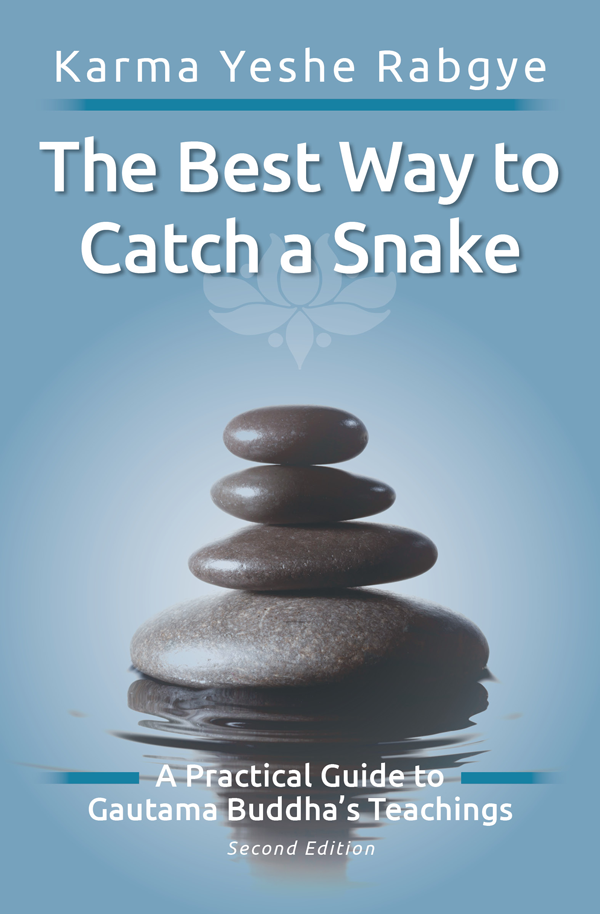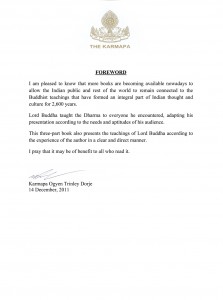Four Noble Truths Introduction
When I first came to Buddhism I studied the Four Noble Truths with the Western Buddhist Order in East London, England. Although I found the subject interesting, I did not, at that time, really understand its relevance. On hindsight, I know now that this was because I wanted to get on to what, to my mind, was the more juicy stuff – visualising deities and chanting secret mantras. It was not until a few years later, when I started getting totally confused trying to understand which mantra goes with which deity and when to ring my bell or shake my drum, that I realised I had completely missed the foundation teachings of Buddhism.
I mention this because now when I’m a Buddhist monk, I see many people going the same way. I think it’s our nature to want to
rush things because we would like to believe that we are too busy to have time to waste – even in the pursuit of enlightenment.
So let me caution you right at the beginning, in case you are too busy to read the rest of the book.
Buddhism is vast, very profound and can be confusing, so it is extremely important that you take your time and build a strong and steady foundation. Imagine building a house without foundations; what do you think would happen to it? It wouldn’t stand up for too long. The same goes for your Buddhist practice: If you build a firm base at the start, you will always be able to fall back on it if you get lost along the way. While this is fairly commonsensical, you would be surprised by the number of people that go on long retreats without first studying the Foundation Teachings. They get freaked out with their own thoughts and have no base to go back to. This leaves them vulnerable, confused, and in the worst case, turns them off Buddhism altogether.
In the sutra on ‘Knowing the Better Way to Catch a Snake,’ Buddha cautioned us:
‘We must bring our whole heart, mind and being into listening to the Buddhist teachings, [otherwise] you may understand it incorrectly, and it will bring more harm than good to you and others.’
Buddha further stated:
‘If you do not practice the Buddhist teachings correctly, you may come to understand it as opposite to what was intended. But if you practice intelligently, you will understand both the letter and the spirit of the teachings and will be able to explain them correctly.’
The snake simile in this sutra was used to convey the potential harm of studying Buddhism incorrectly. Thus, the best way to catch a snake is by pinning its head down, and the best way to pin the head of Buddhism down is by studying the Buddhist Foundation Teachings, listening carefully to the teachings, and putting them into practice.
The Foundation Teachings I am talking about are the Four Noble Truths; the Three Marks of Existence; and the Twelve Interdependent Links. It is most important that you fully understand these three teachings of Buddha. Some people spend their entire life studying and practising them, and still feel they have not mastered them. Please do not be dragged into so-called ‘higher teachings’ because of the ceremony and rituals attached to them. Indeed, they may look mysterious and intriguing, but they can also be counter-productive without a basic understanding of Buddhism.
I see a lot of people being completely swept along by the Buddhist bandwagon, believing they have to buy everything ‘Buddhist’. For example, once as I was waiting for a friend in a hotel lounge, I saw an American Buddhist magazine. I thought I’d read it to help me pass some time and picked it up. I was totally shocked to see so many advertisements on every page. There were things I had never heard of, but all the attractive ads suggested that I needed their help for me to become a ‘Real Buddhist’. There were designer meditation stools, which would look more at home in a torture chamber than a Buddhist’s home, there were extremely expensive red-and-white shawls being modelled by some very attractive ‘Buddhists’, there
was even an electronic mala (prayer beads) that had an alarm fitted to it, which I presume rings once you reach enlightenment.
All this is ‘commercial Buddhism’ and will not get you any closer to enlightenment. Buddhism is an inward journey, and spending thousands of dollars on gadgets is not going to help. You do not need a special stool, mala, or even a uniform; what you need is a good teacher to help you along the path to enlightenment.
The teacher is your guide along the path and so it is important to choose an authentic master. You wouldn’t dream of climbing Everest with someone who has no knowledge of the Himalayas, so you shouldn’t take on a teacher who doesn’t practise the words of Buddha.
Gautama Buddha was an extremely talented teacher and managed to give the appropriate instructions at the right time to the right person. This is a rare talent. However, even he said that you should not just blindly accept his words without checking them out. According to the Kalama Sutra:
Do not believe in anything simply because you have heard it.
Do not believe in traditions because they have been handed down for many generations.
Do not believe in anything because it is spoken and rumoured by many.
Do not believe in anything simply because it is found written in your religious books.
Do not believe in anything merely on the authority of your teachers or elders.
But after observation and analysis,
When you find that something agrees with reason and is conducive to the good and benefit of one and all,
then accept it and live up to it.











